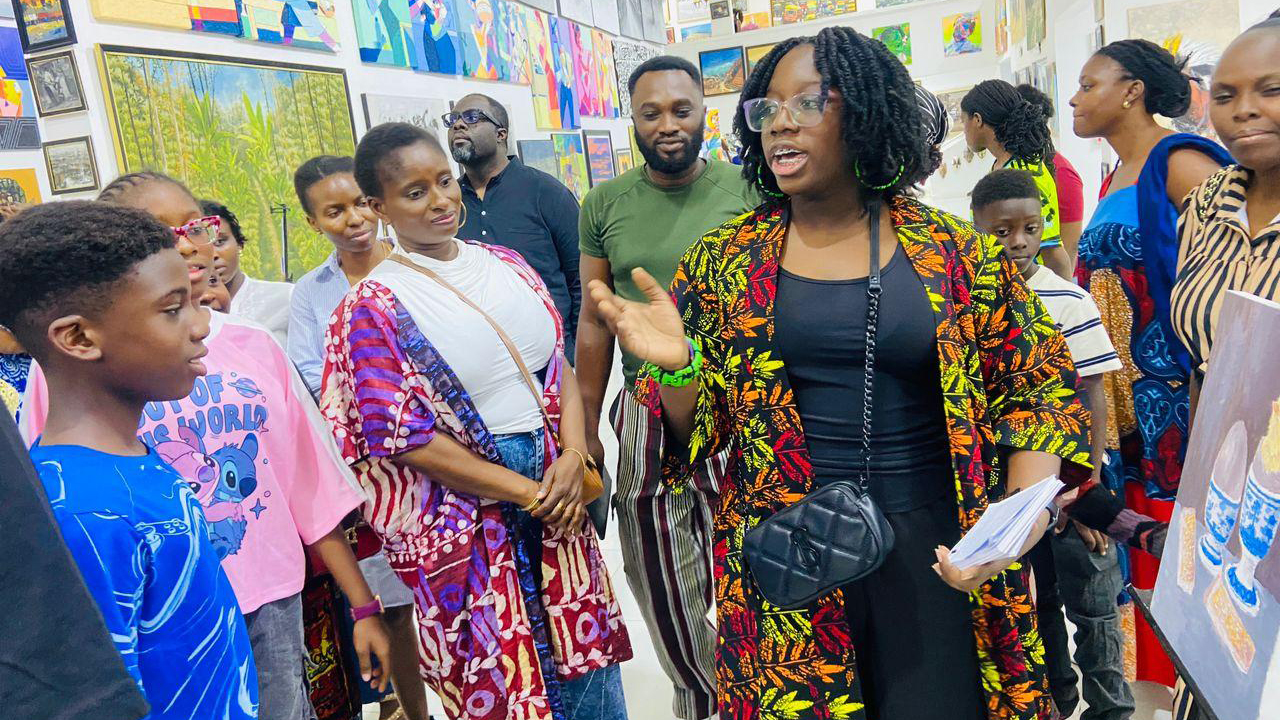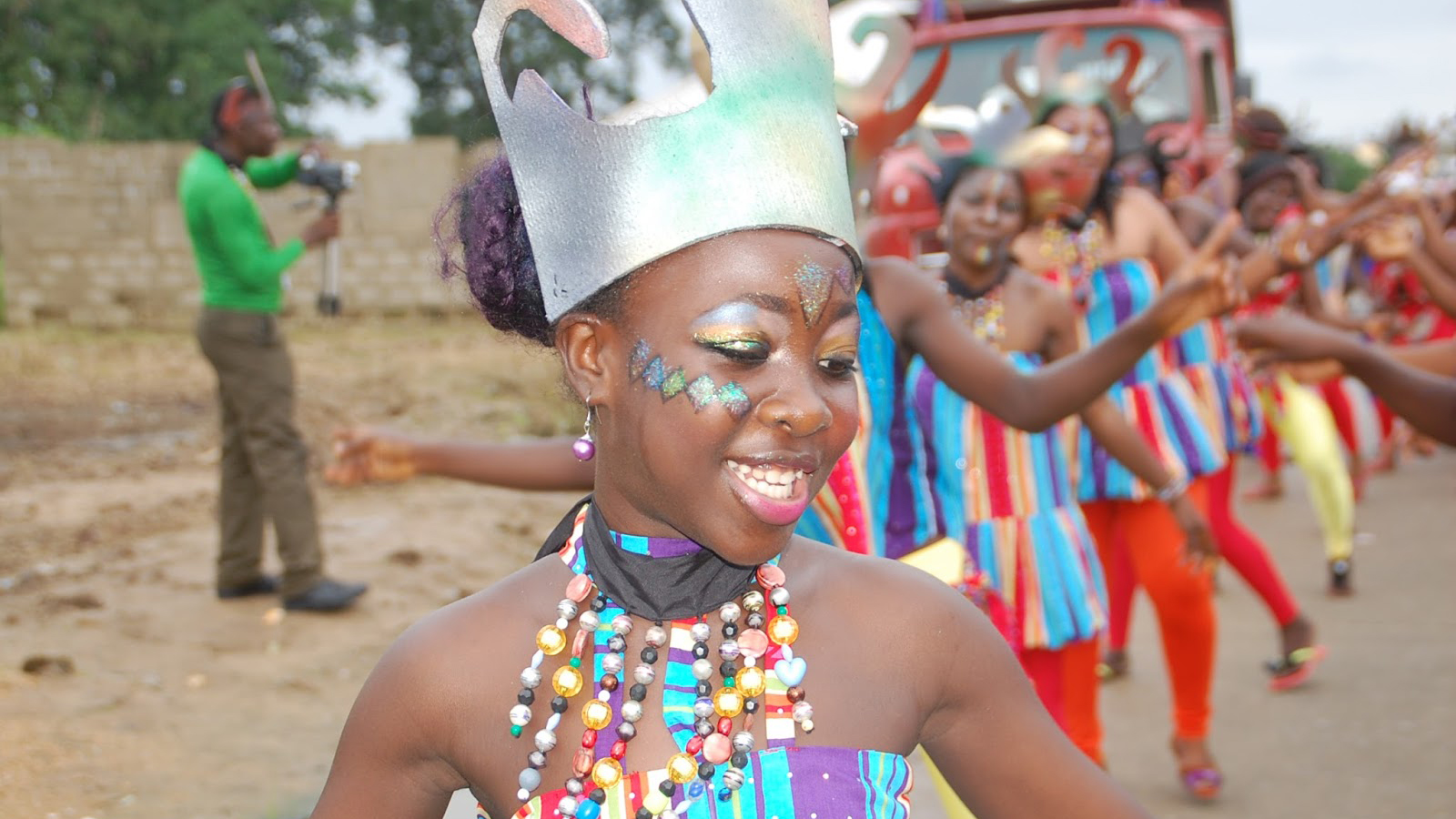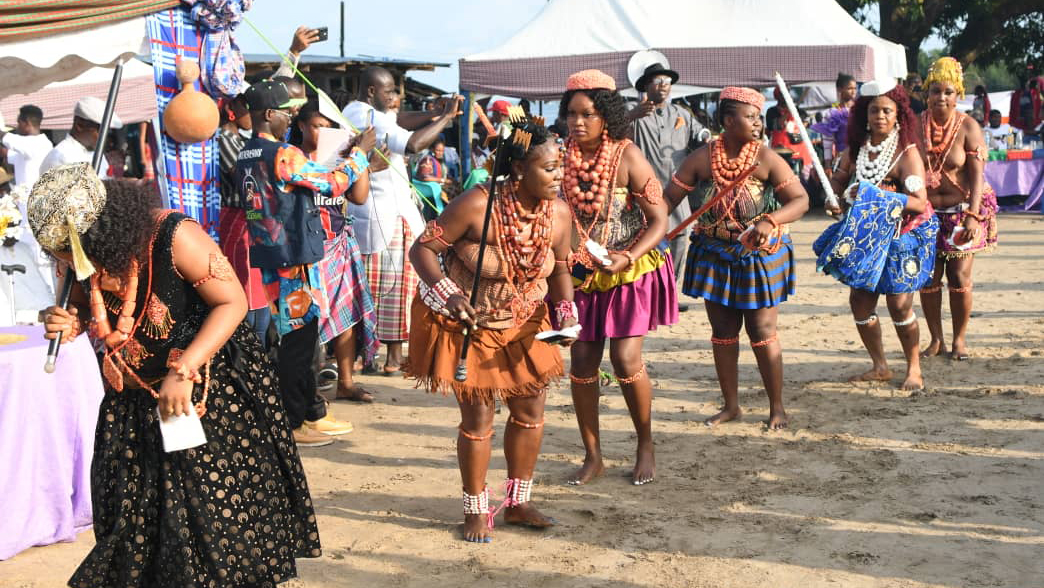Olalekan Adetunji’s photography project “Ori, The Crown We Wear” centres on hair as worn by women in Yoruba culture. Each of the three images within the project is a study that also doubles as a meditation on adornment. The subjects — the women — have their heads turned away from the camera, resisting portraiture’s usual insistence on the face. Adetunji renders the hair itself as subject — woven, beaded, coiled, and strung with cowries — serving a purpose beyond mere ornament, but as conduits of memory and meaning.
Adetunji’s first frame is monochrome. The woman’s head is turned slightly, revealing the side of her cheek: rows of braids stretched outward like rays, studded with cowries that gleam faintly in the grey wash. At the crown, a crocheted coil sits like a woven diadem. Adetunji allows the texture of the image itself — the film grain, the slight blur — to mirror the complexity of hair as living material. The result is an image that insists the head is both body and cosmology.
In their restraint and focus, the images recall the solemn tonalities of J.D. ’Okhai Ojeikere’s famed Hairstyles series, in which the backs of women’s heads became vast landscapes of design, geometry, and cultural endurance. Adetunji’s photos take a similar approach in execution, albeit more intimate with their sole focus on an individual. There is something painterly in Adetunji’s compositions. The hair becomes an architectural structure — each braid a line, each cowrie a point of light.
In the second image, Adetunji abandons monochrome austerity for a saturated palette. The braids spiral upward in thick ridges, punctuated by golden cowries and a sudden, startling eruption of a red feather. Blue beads cluster like constellations near the temple, while the woman’s jewellery spills down in yellows and greens. If the first photograph murmured of continuity and tradition, this one crackles with vitality and improvisation, its details bordering on the baroque — fully contemporary.
The final photograph returns to black and white but with a heightened sense of sculptural drama. The hair rises in a long, looping form, cowries strung along its arc, while strings of beads are worn around the looped hair. The monochrome forces us to read the braids like the lines of an engraving. There is something almost monumental in the way the hair loops skyward, recalling the vertical aspirations of Yoruba carved headdresses or even the stacked geometries of Nok terracottas. If the second photograph celebrated adornment’s dynamism, this one emphasises its gravity — the head as temple.
What Olalekan Adetunji captures through this series of photos is not simply hairstyle but cosmology. In Yoruba thought, ori — the head — is not only the seat of consciousness but the vessel of destiny, the locus of spiritual authority. These women, then, are not posing for us; they are bearing the visible evidence of lineage and belief. In a world where African adornment is too often reduced to “ethnic chic” in global fashion spreads, Adetunji insists on its deeper register: the hair as shrine, the crown as inheritance.






